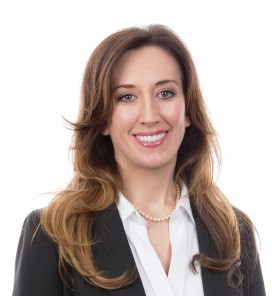The Future of Accountable Care Organizations Involves Risk
More accountable care organizations will need to take on financial risk in order to sustain shared savings and improve healthcare revenue cycle competency.

- As many healthcare providers know, participating in a value-based care program, such as an accountable care organization, is about more than just tying payment to quality. It involves shouldering financial risk as a way to motivate clinicians to make better choices and promote accountability for their services.

However, many healthcare organizations have shied away from accepting more financial risk as part of a value-based care model even though the models were designed to include some risk burden.
One of the major concerns with risk-based ACO structures is that some healthcare organizations could end up owing millions to payers in the event that their ACO does not achieve quality and cost goals. Some ACOs could even risk repaying all of their Medicare revenue due to shared loss arrangements with CMS.
For many, the potential for greater shared savings through a risk-based ACO model does not outweigh the potential losses.
But could more financial risk be the key to sustaining the ACO model and maximizing the financial rewards of the structure?
According to April Wortham Collins, Manager of Customer Segment Analysis at Decision Resources group, the ACO landscape will likely be shifting to a more risk-based environment in the near future as CMS pushes Medicare ACOs into downside risk arrangements - and providers realize that financial risk is necessary to earn more shared savings.
As the ACO environment involves and participation rates increase, the ecosystem has gone through a number of changes.
“We have seen a rapid growth rate for ACOs, which started back in 2012 when CMS launched the Medicare Shared Savings Program (MSSP),” Wortham Collins said to RevCycleIntelligence.com. “There have been a lot of changes to the MSSP and other ACO programs since then, and some additions, too.”
“Alongside the ACO initiatives from CMS, you have the commercial market. There are more patient lives in commercial ACOs right now than in CMS ACO programs. Also, you have several states that are adopting the ACO model for their Medicaid populations.”
“There were virtually no ACOs in 2012, and then by 2015, we had nearly 1000.”
Despite a short slowdown in ACO growth rates in 2015 as many stakeholders favored a wait-and-see approach with the model, more providers are starting to sign up for ACOs in 2016, especially with the addition of the Next Generation ACO model from CMS.
The newest addition to the Medicare ACO family offers participants options when it comes to accepting financial risk as well as various flexible payment options, such as traditional fee-for-service, fee-for-service with ACO support payment, population-based payments, and capitation.
The Next Generation ACO also establishes benchmarks at the start of the performance period and accounts for regional trends, making it easier for healthcare providers to meet performance improvement goals.
Earlier this year, CMS announced that 121 new participants had joined Medicare ACO programs, including 21 that selected the Next Generation ACO program.
“There’s still more to be done, but we are seeing a number of new organizations thus far in 2016,” Wortham Collins said. “We don’t feel as if the pace will be as aggressive as it was in the early years, but I think there will be more new agreements in 2016 than there were in 2015.”
While ACO participation is currently rising, Wortham Collins stated that the majority of organizations are still using the traditional fee-for-service reimbursement model and excluding two-sided risk structures.
CMS has also reported that only 64 ACOs out of the current total of 477 were in a risk-bearing track.
“Now, we still refer to those as ACOs, even though they’re using fee-for-service, because there’s a shared savings element that’s built into their agreements. They are rewarded for meeting quality targets and reducing total healthcare expenditures. If they do that, then they get a share of the savings that they created – that’s where the term comes from.”
This is referred to as an up-side risk model, she added. While ACOs could be rewarded for meeting or exceeding benchmarks, they are not financially penalized for falling short of performance goals like in the two-sided risk model.
Even though two-sided ACO models are in the minority, the financial risk component could be the key to sustaining and eventually increasing financial rewards, explained Wortham Collins.
“That first year when you’re in an ACO and you set your benchmark expenditures. Whatever savings you achieve during that first year, you have to work even harder to meet your subsequent goals. Under a fully fee-for-service model, you’re going to run out of places to cut costs, and your savings are going to get smaller and smaller.”
Under the upside risk ACO model, organizations face fewer rewards as time goes on, since they are being compared to their own performance. In downside risk arrangements, ACOs are more likely to calculate benchmarks prospectively rather than retrospectively, making it easier for providers to anticipate their goals and appropriately cut costs.
“In order to really reap all of the financial and quality rewards that we hope to see from ACOs, eventually they will have to move over to risk,” said Wortham Collins.
As financial risk shifts to the providers, ACO participants become more responsible for improving patient outcomes and healthcare spending rates in order to maximize revenue. To manage risk-based contracts, providers must invest in data analytics to capture the right information to send to payers and improving patient-centered care, such as boosting preventative care and population health programs that better patient outcomes.
The necessary technology upgrades, along with the performance improvements and innovative care delivery models required to produce results, will not be easy to achieve, she added.
“Right now, we’re living with one foot in fee-for-service and the other in value-based reimbursement,” she explained. “It’s a painful place for providers to be, but it’s also scary for them to jump over into that value-based world.”
“They just have to come to realize that they can’t straddle the line forever, or they’ll fall into the gap.”
Federal agencies, such as CMS, are also encouraging ACOs to assume financial risks, said Wortham Collins. This will cause the ACO landscape to change in the next three to five years, even though it could take many more years for all ACOs to exist in a risk-based environment.
“Part of that timeline is being driven by CMS and the timelines involved in the Medicare ACO programs,” said Wortham Collins. “When those three year agreements run down at the end of this cycle, ACOs are going to have to make decisions about moving towards risk. The second round of three-year agreements started in January of 2016, and so they’ll go through 2019.”
“Starting in that year, unless more changes are made to the models, these entities will have to start accepting downside risk. That is going to change everything very quickly.”
Dig Deeper:
• Characteristics of Successful Accountable Care Organizations
• Why Accountable Care Organizations Need Revenue Cycle Risk
